Which itinerary is best for spending 10 fantastic days in the beautiful country of Italy with Rome, the Amalfi Coast, Florence, and the splendid Venice? Let’s see how to make the most of your trip to Italy!
10 days itinerary to discover Italy
There is so much to experience in Italy that it is hard to squeeze everything into a 10-day itinerary. Rome, Florence, and Venice are obvious must-sees. We propose a 10-day itinerary in Italy with Amalfi Coast and Naples. You can travel quickly to Naples and enjoy a unique side of Italy.
Day 1 – 3: Rome
With 10 days in Italy, we start our itinerary in Rome. We stay 3 nights in Rome, but there are only 2 and a half days of visits because you will arrive on the first day and leave for Naples on the fourth day.
With only 3 nights in Rome, it is essential to pick a well-located hotel. Rome is a relatively big city. You can save time in transport. We recommend the area near the Vatican or Piazza Navona. You can read our post on Rome’s area to stay at.
See also our top things to do and visit in Rome.
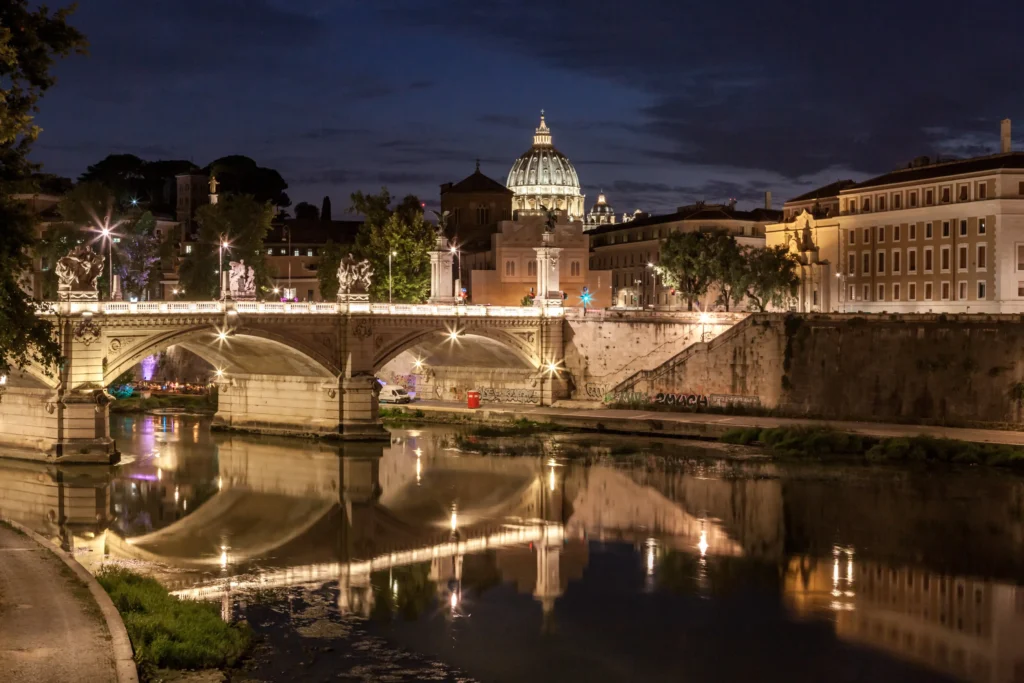
Day 1: Arrival in Rome
Arrival. Yes, day 1 in Italy! You will arrive at Aeroporto International Leonardo da Vinci, Fiumicino Airport (FCO). The airport is quite far from the city, expect at least 30mn to go to the hotel. You have 3 ways to reach the city: shuttle bus, train, or taxi. The train is often the fastest because there are no rail traffic jams. Although, it will take you to Rome’s train station and you must get a taxi to the hotel. The taxi is more convenient, especially if your hotel is near Vatican City. Lastly, the shuttle bus is cheap. You can find every detail in our post about airport transfer in Rome.
Ciampino Airport. A second airport in Rome, Aeroporto di Roma Ciampino – Giovan Battista Pastine. Only some flights from low-cost carriers like Ryanair land here.
Jet-lag. Rome’s timezone is GMT+1 or GMT+2 in the summer. Coming from the US, you will have between 6 and 9 hours of time difference. That’s quite a lot for 10 days in Italy. If possible, get to bed and wake up early the week before traveling. If you get up at 8 am in Rome, that’s 2 am on the east coast.
Walking Tour. Even if you arrive late, the best thing to begin your Rome stay is a little walk from your hotel to Trevi Fountain. You can take the tiny street of Via del Salvatore from Piazza Navona, followed by Via Giustiniani, to reach the Pantheon. If it is still open and you have time, visit the Pantheon. Admission is free, and the visit is quick. Next, you continue on Via dei Pastini, walk by Adriano’s Temple, pursue Via delle Muratte, and you will arrive in front of Trevi Fountain.
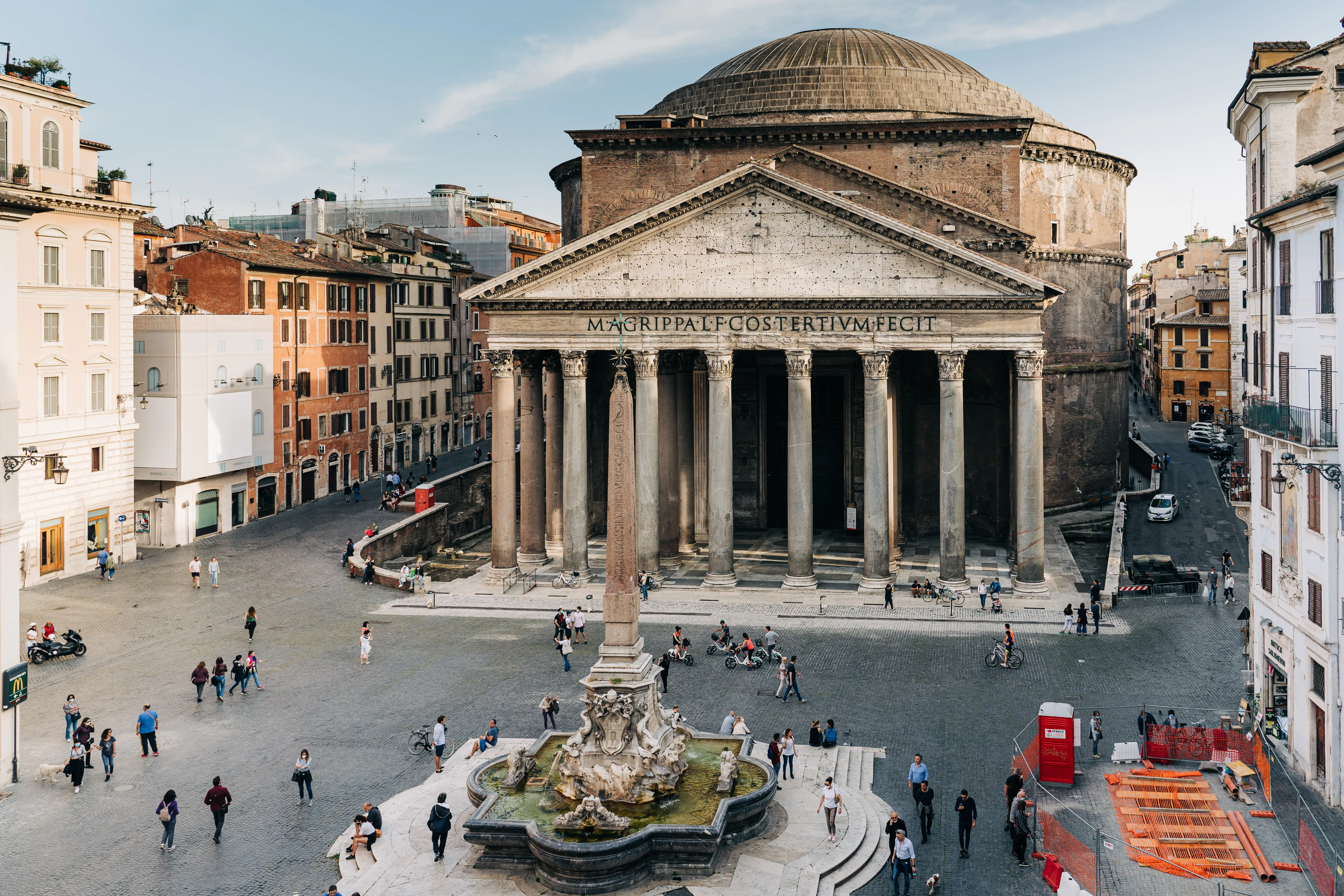
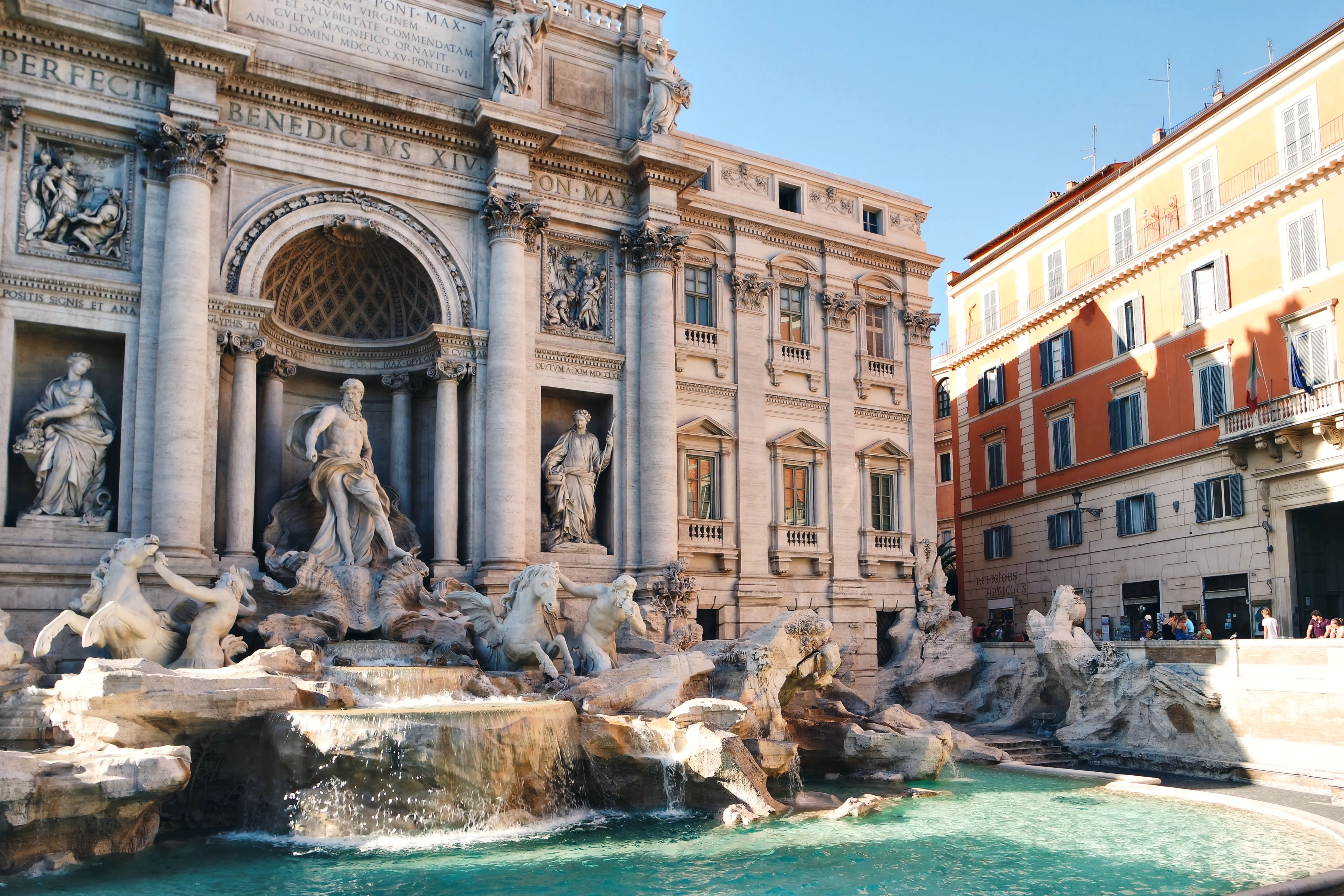
Day 2: Roman Times
Colosseum. The Colosseum is impressive. It still stands nowadays, even if part was deconstructed (they used the stones to build St Peter’s Basilica in the Vatican). For security reasons, the Colosseum capacity is maxed at 3000 people, so try to come in the morning and take a skip-the-line ticket. See our guide for visiting the Colosseum.
Roman Forum. The Roman Forum and Palatine Hill are close to the Colosseum. You can go from one to the other on foot. There are few queues for the Roman Forum. It can accept much more people without hazards as it is an open area. This place is enormous; you can walk for hours. It is a fantastic visit, especially if you like the Roman period.
Monument to Vittorio Emmanuel II. Italy is a recent country. Vittorio Emmanuel II was the first king of a unified Italy since Roman times. Thus, it is also a monument to Italy’s unification. You can climb on the terrace and experience a captivating view of Rome.
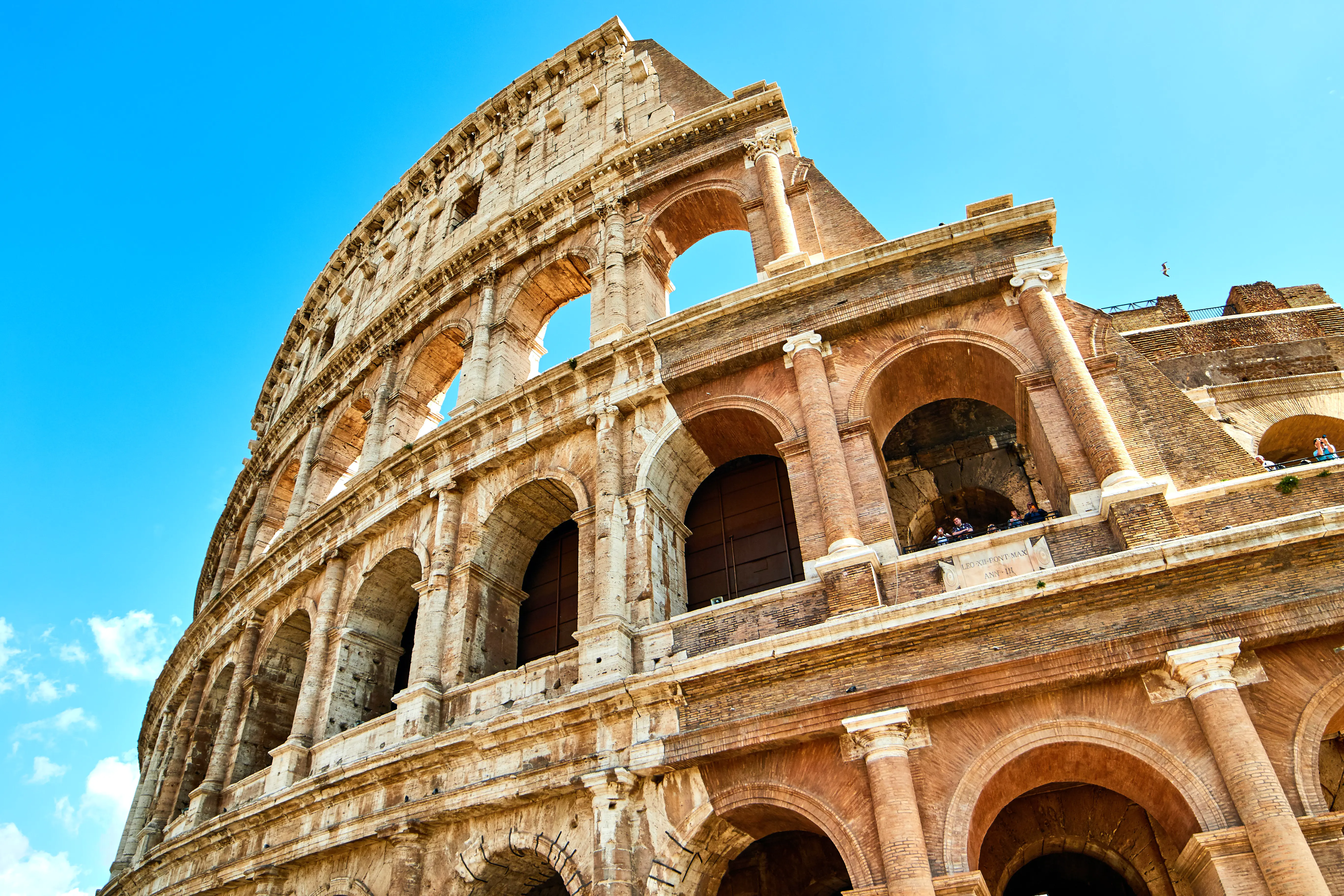
Day 3: Vatican City
St Peter’s Basilica. The majestuous St Peter’s Basilica is not to be missed in Rome. The interior is beautiful; it may be the most beautiful church in the world. You can climb on top of it and enjoy a sublime view. See our guide for visiting the Vatican.
Sistine Chapel. Michelangelo painted the sumptuous ceiling. The ceiling alone makes the Sistine Chapel worth visiting.
Vatican museums. The Vatican holds one of the most extensive art collections worldwide.
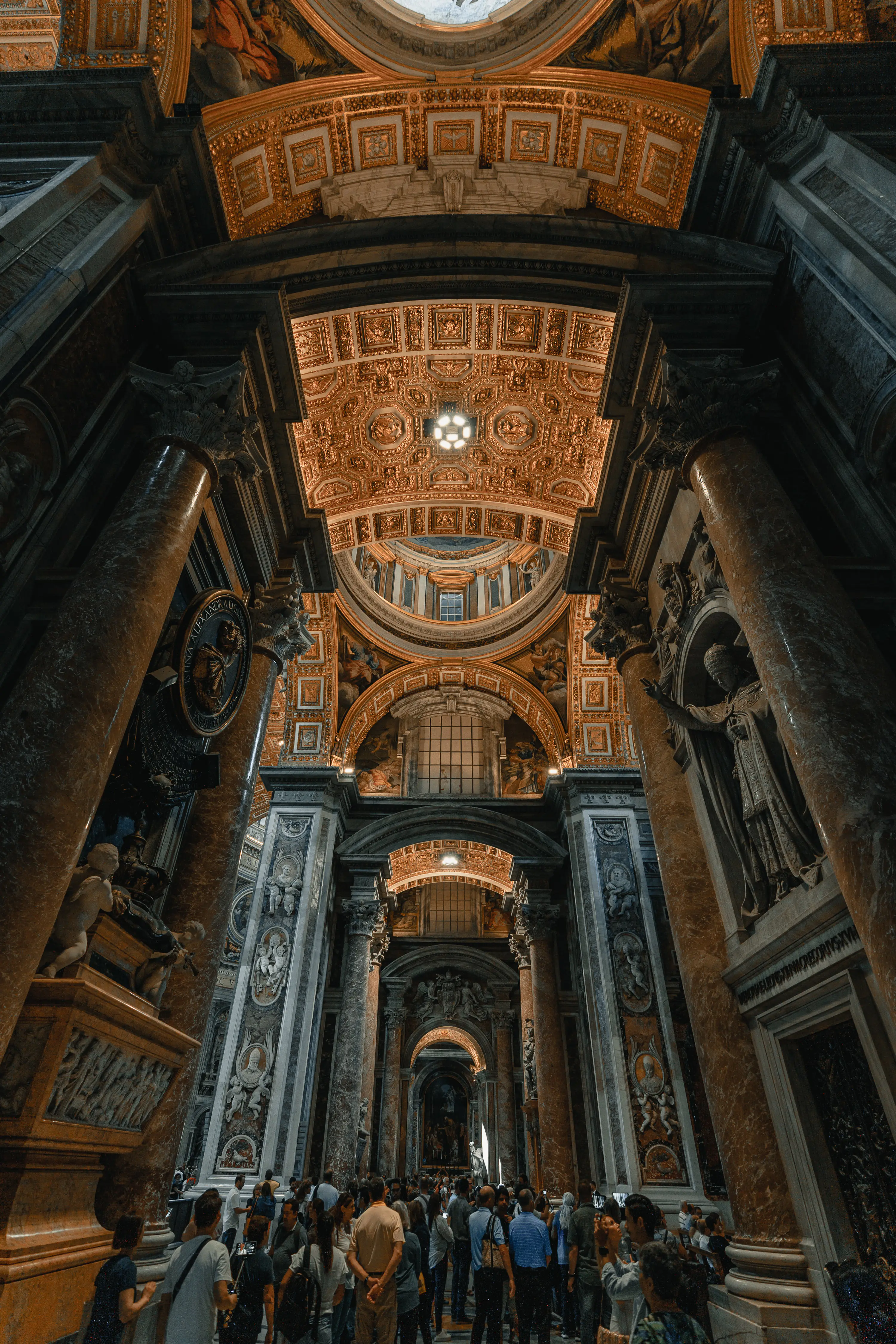
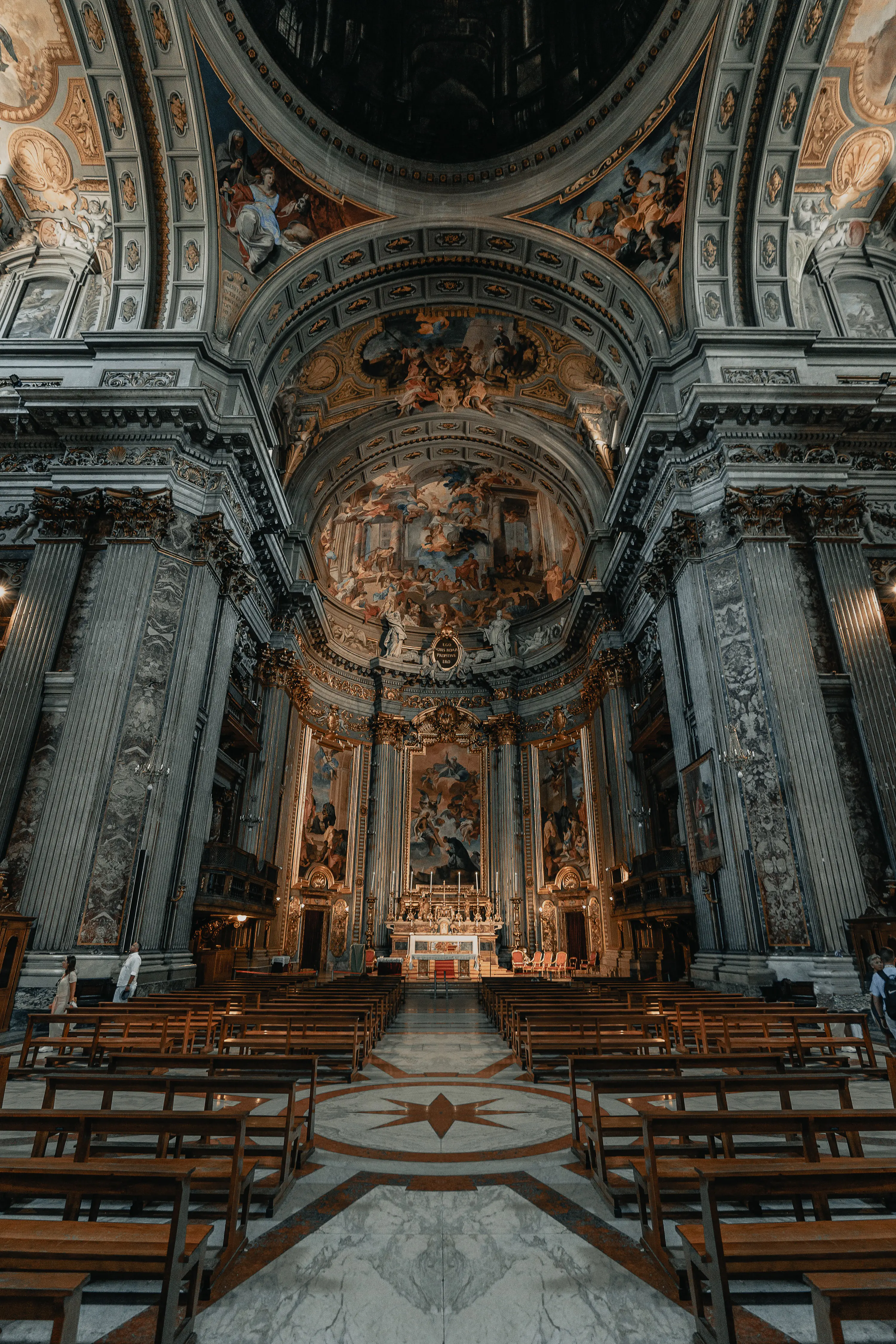
Day 4 – 6: Naples
Accommodation. Pick a hotel close to the train station; it is convenient because you can arrive and leave from there. Find here the best hotels to stay in Naples.
Day 4: Transfer to Naples
Train transfer. You will love traveling by train during this itinerary and your 10 days in Italy because it is convenient. You can travel very fast between Italian cities thanks to well-developed railways. Going from Rome to Naples will only take 1h10mn and cost about 30$ per person. The train leaves from downtown Rome (Termini Station) and stops in downtown Naples. You don’t need to arrive at the train station 2 hours before departures, 30mn is enough. You can find every detail in our post about traveling by train in Italy (Coming Soon).
Naples Landmarks. Walk through the streets of Naples and explore the historic center. Must-sees in Naples include the Sansevero Chapel, the Cathedral of Our Lady of the Assumption, the Piazza del Plebiscito, the Galleria Umberto I, and the San Gennaro Catacombs. Click here to learn more about the best things to do in Naples.
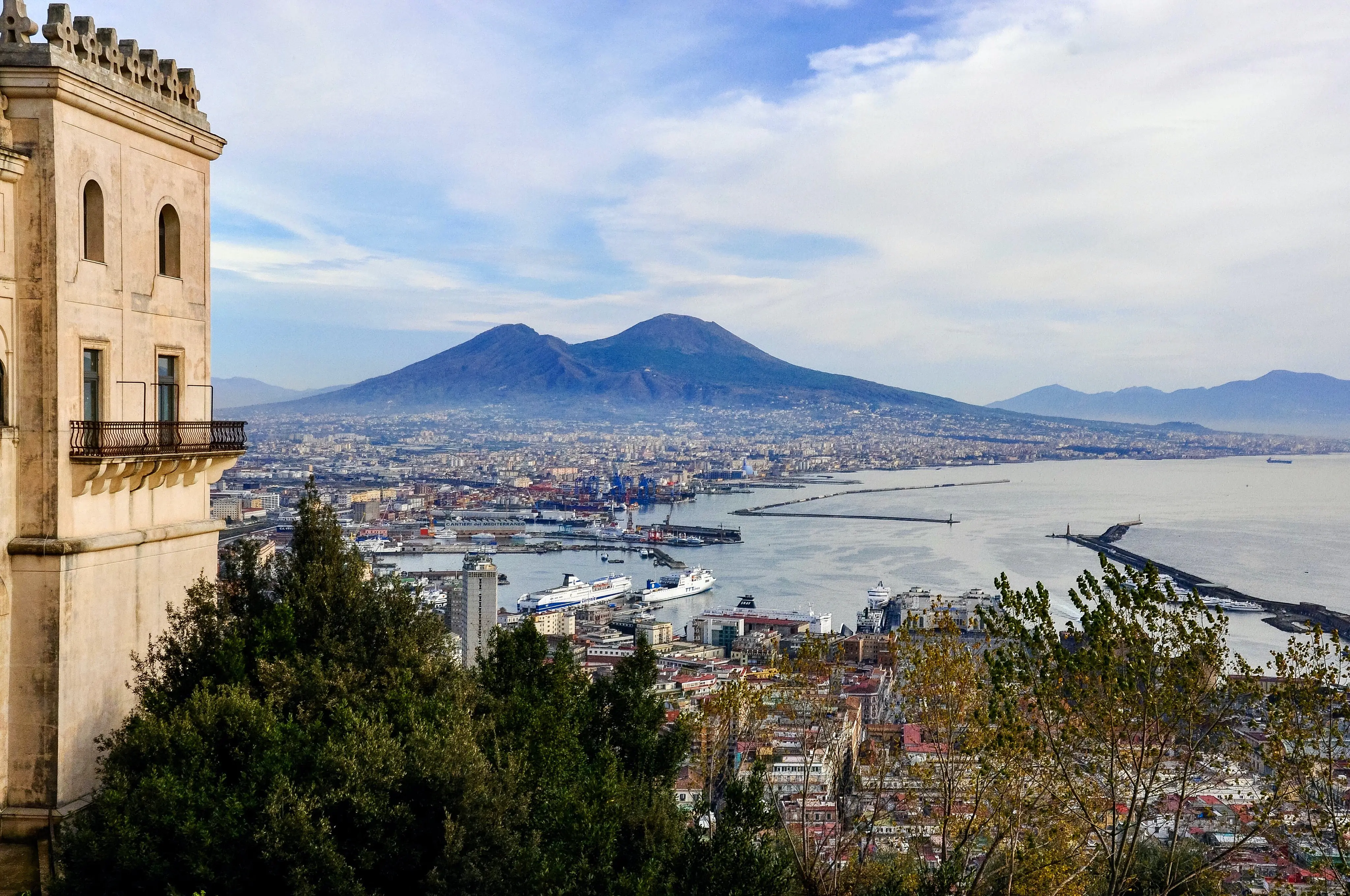
Day 5: Pompei + Vesuvius
Pompei is a buried Roman city. In 79 AD, the nearby volcano Vesuvius woke up and covered the town with a thick ash cloud. It is an exceptionally conserved ruin. A fascinating place to visit during this 10-day itinerary in Italy, especially for Roman times lovers.
Vesuvius. The Vesuvius is an active volcano. You can climb on it and enjoy a stunning view of Naples Bay.
How to visit. You can see Pompei by yourself if you want. You can get there by bus or taxi in about 40mn. Vesuvius is only accessible with a guide. A convenient way to see both is by taking a day tour with both visits included.

Alternative Day 5: Sorrento, Positano and the Amalfi Coast
Beautiful landscapes. If you like gorgeous coasts, skip Pompei and the Vesuvius and spend the day on the Amalfi Coast. Towns like Sorrento, Positano, and Salerne are lovely.
How to get to. The Amalfi Coast is between 1h and 1h30, away from downtown Naples. You can rent a car or take an organized day trip.
Alternative. You can adapt this 10-day itinerary in Italy to spend more time on the Amalfi Coast and less in Florence if you are not fond of Art. More details are below.
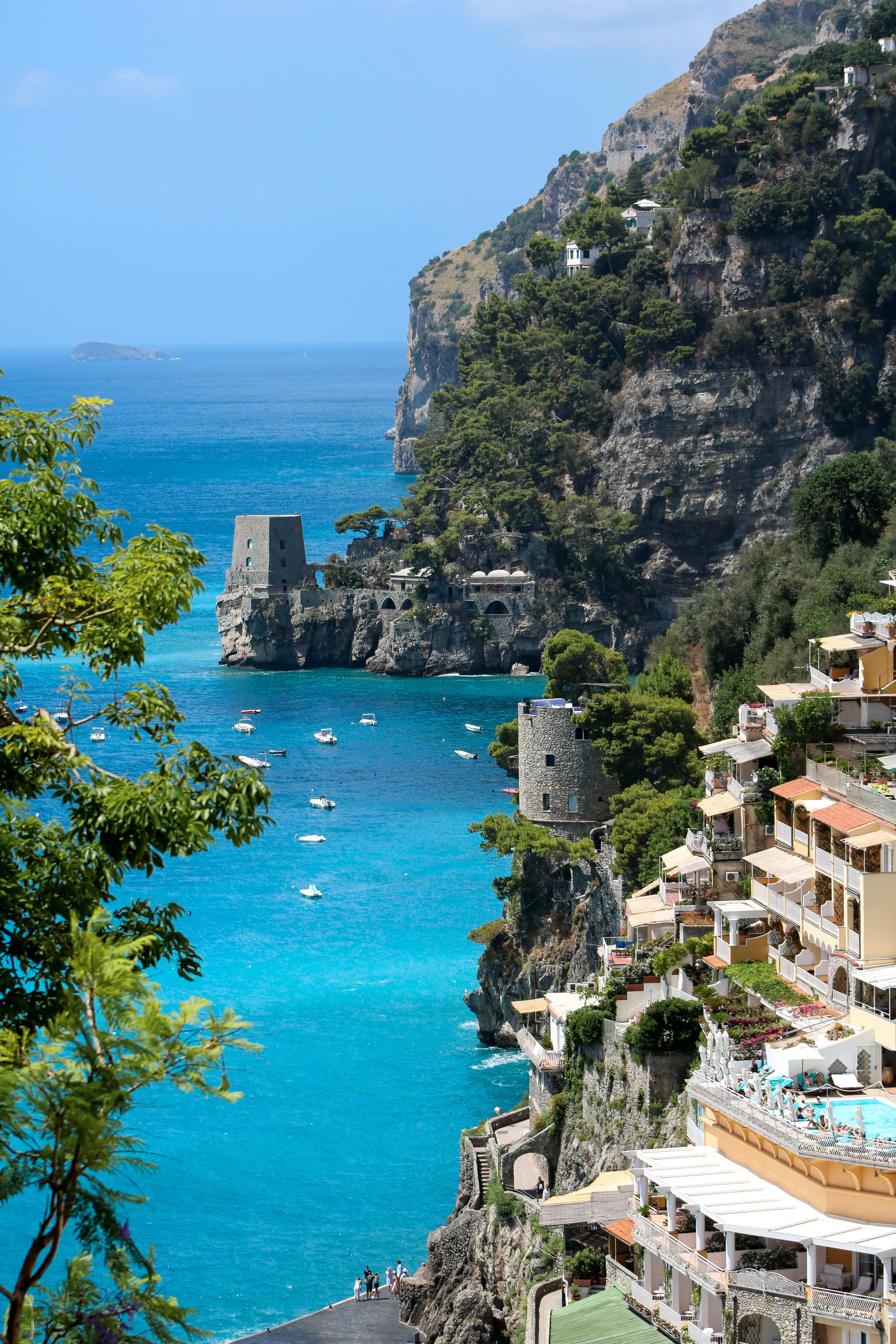
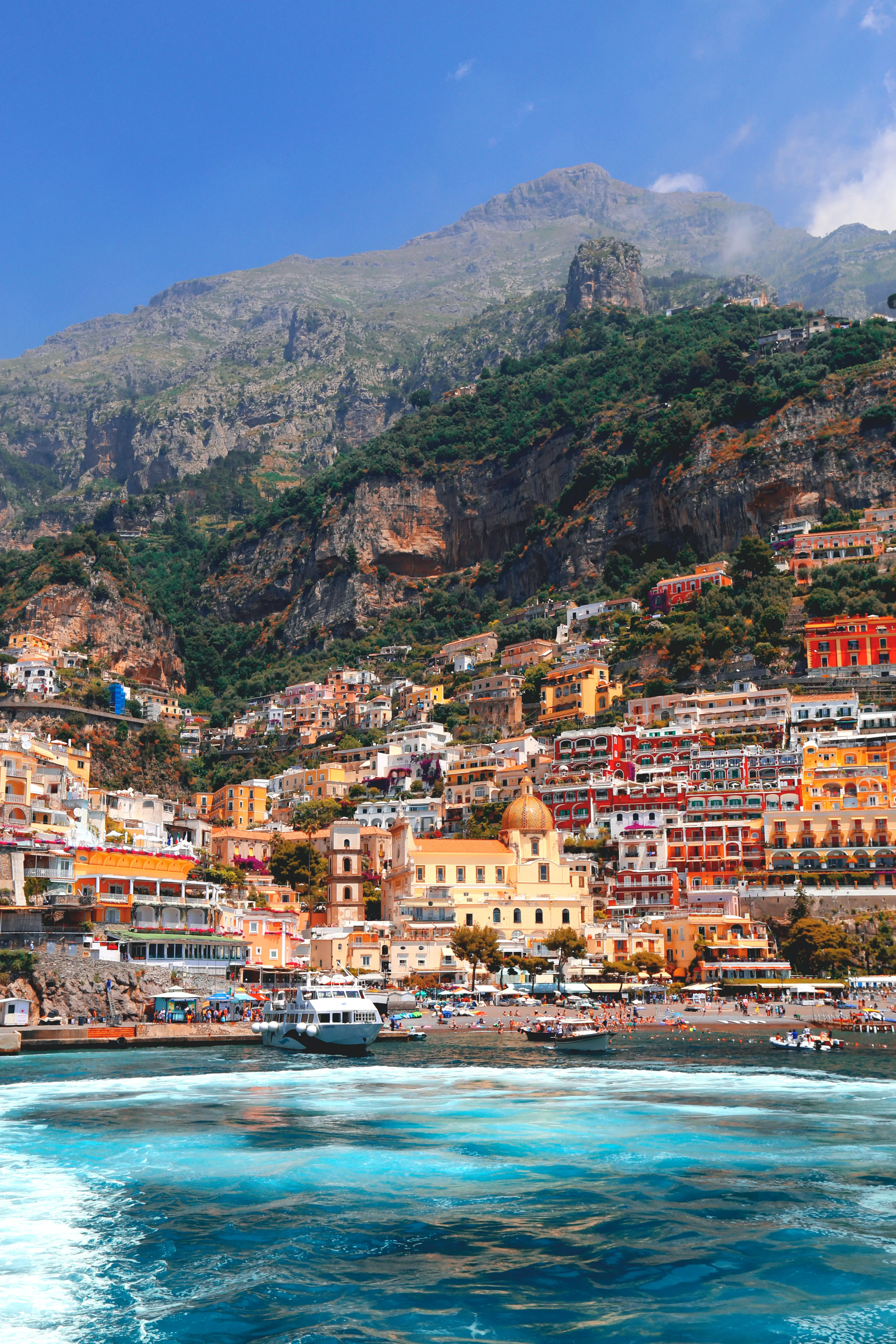
Day 6 – 8: Florence with a day trip to Pise or Cinque Terre
Hotels. Choose a hotel near the train station since you will arrive and leave Florence by train. It is also convenient because Florence’s train station is deep in the historic center. Only 10 minutes away from the Cathedral and 15 minutes from Ponte Vecchio. See our tips for choosing accommodation in Florence.
Day 6: Transfer to Florence
Train transfer. Direct trains from Naples to Florence take about 3 hours.
Art. The best thing to do in Florence is to enjoy the splendid artwork. The most beautiful Italian Renaissance artworks are exhibited in the Uffizi Gallery. Another great place is the Accademia Gallery, where you can see the world-famous David by Michelangelo.
Historic center. You can visit Florence on foot and see the Piazza del Duomo, the Cathedral of Santa Maria del Fiore, and the Piazza della Signoria. Don’t miss our top things to do and visit in Florence.
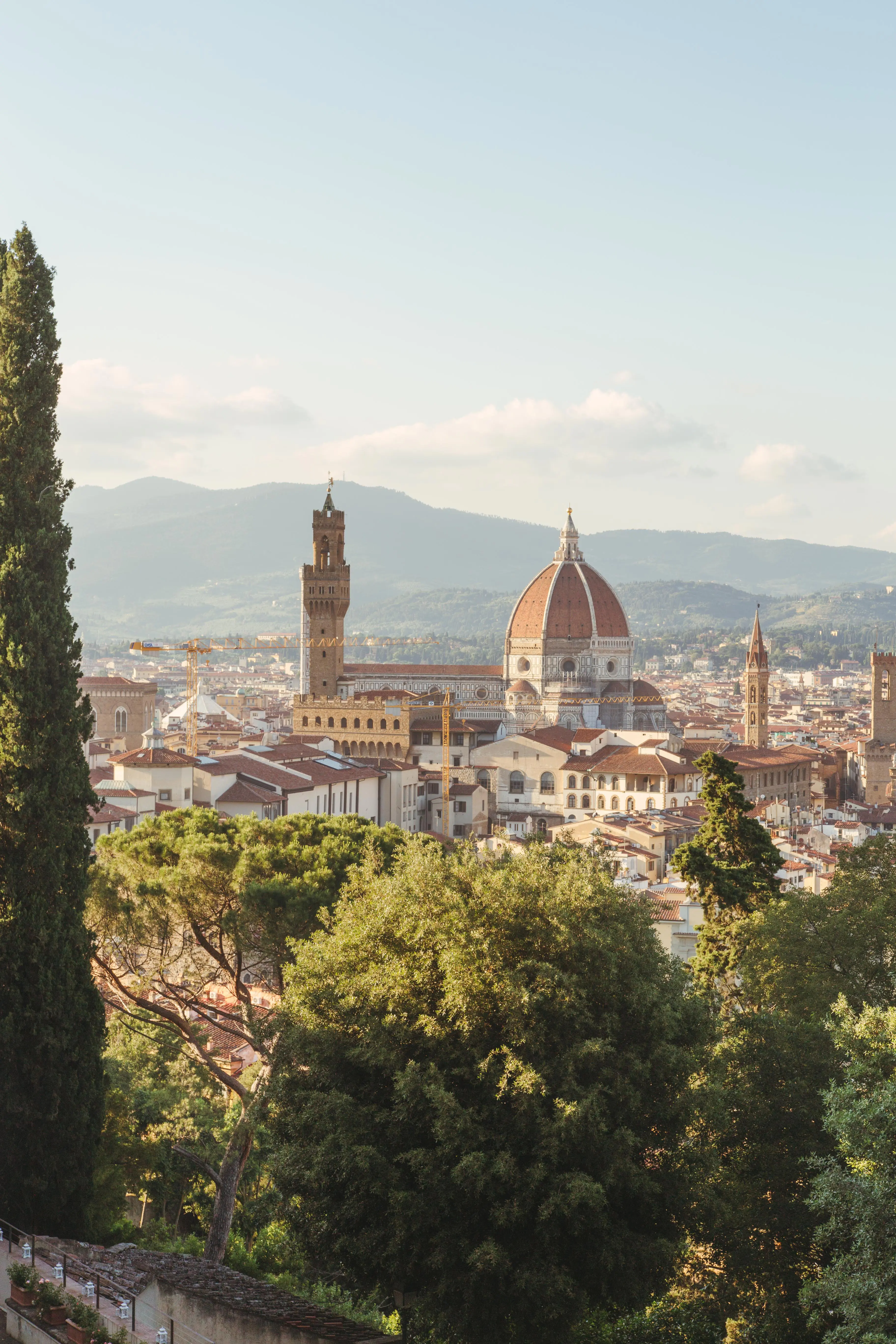
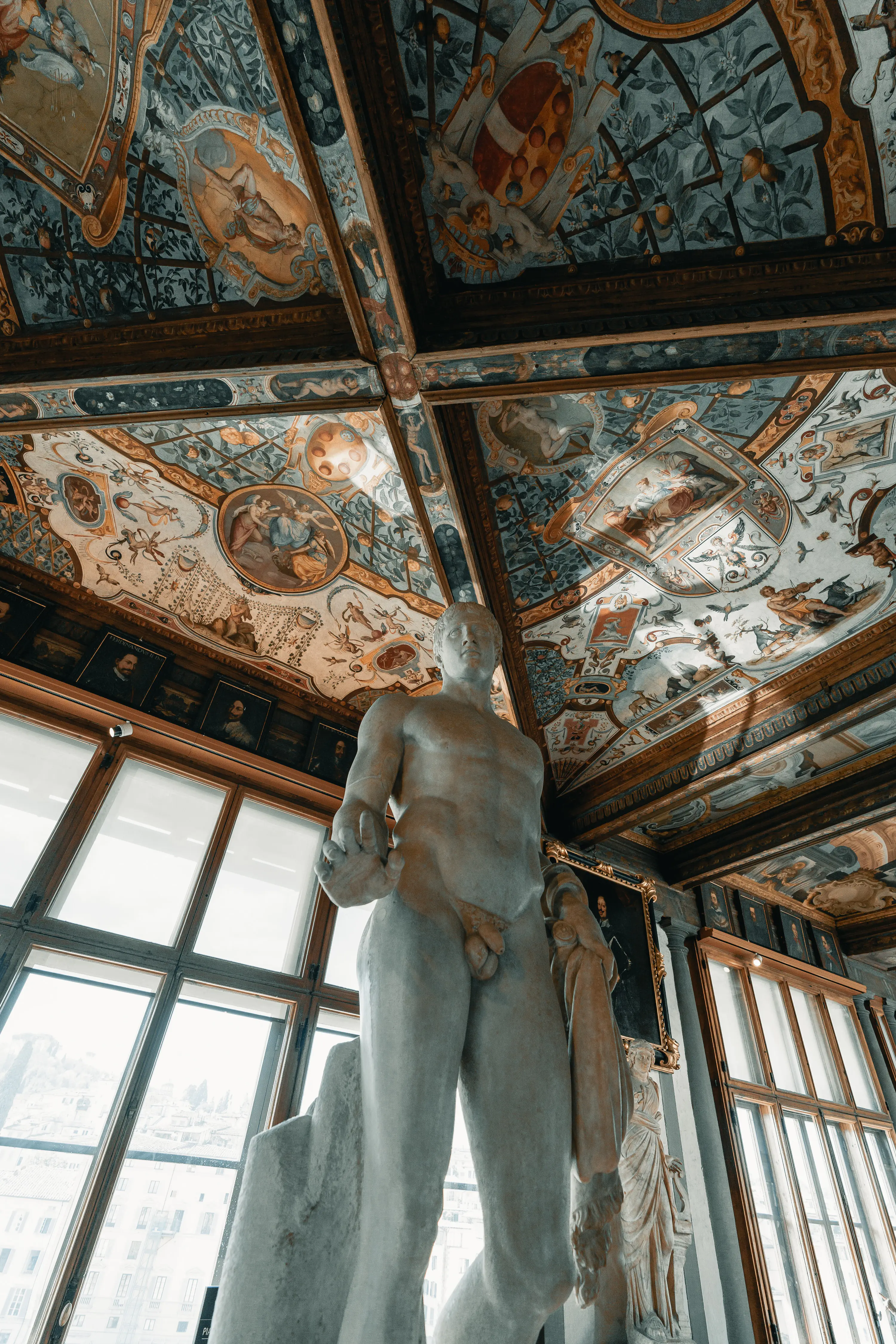
Day 7: A Day trip in Tuscany, Pise, or Cinque Terre
Tuscany. Florence is the capital of the Tuscany region. Tuscany is one of the most beautiful regions in Italy. It is a marvelous countryside, with many vineyards and wineries.
Pise. You can also visit Pise to see the world-famous Leaning Tower of Pisa. You can take a day tour from Florence. Since you are now an expert in Italian railways, you can even take a round trip from Florence to Pise and discover the city of Pise yourself. The train trip gives an idea of Tuscany’s countryside: beautiful. The tower is not near the train station; you must walk 30 minutes to the historic center.
Cinque Terre. Cinque Terre in Italian means “Five Lands”. Cinque Terre National Park is a coastline with five villages. Each village was built on a cliffside, giving a unique style. Traveling by boat between villages is easier because the landscape is very steep.
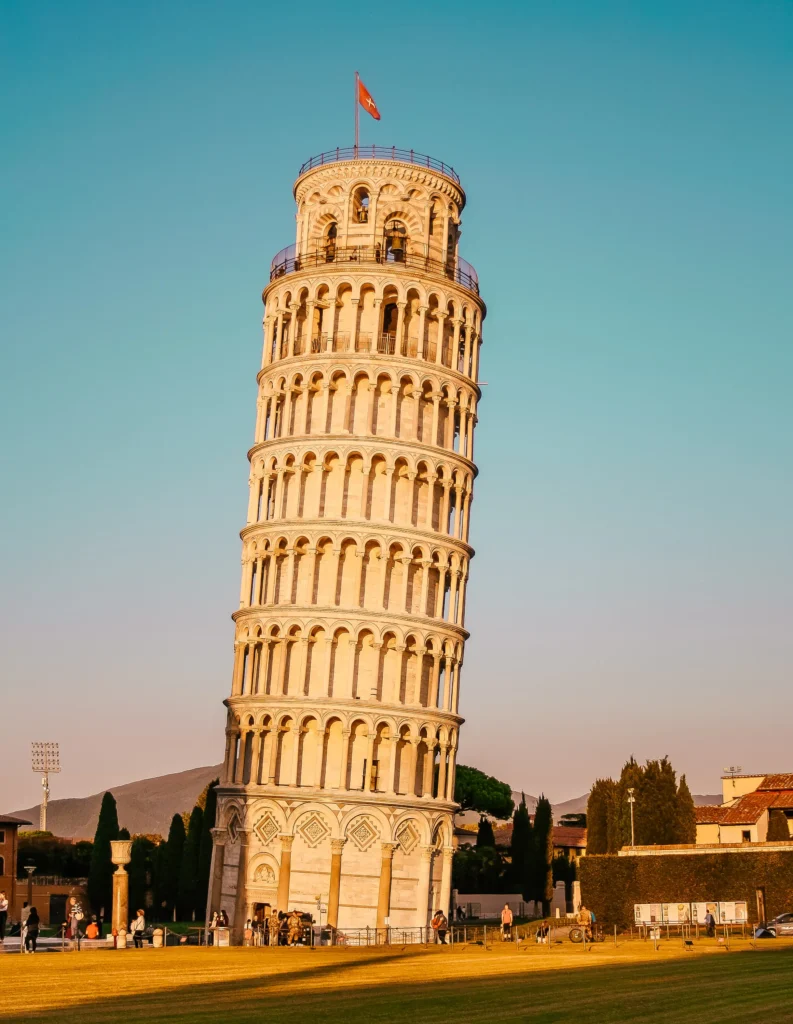
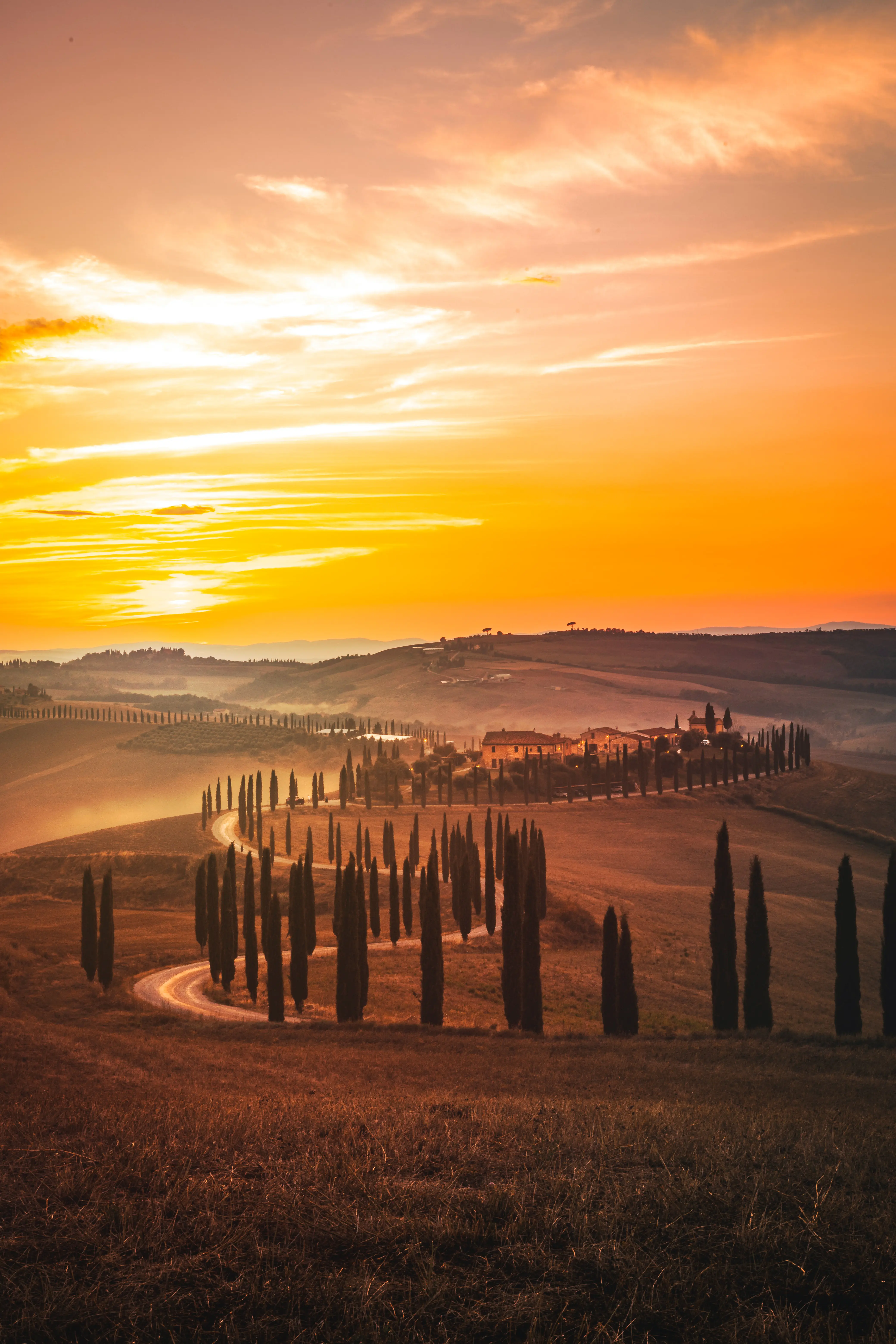
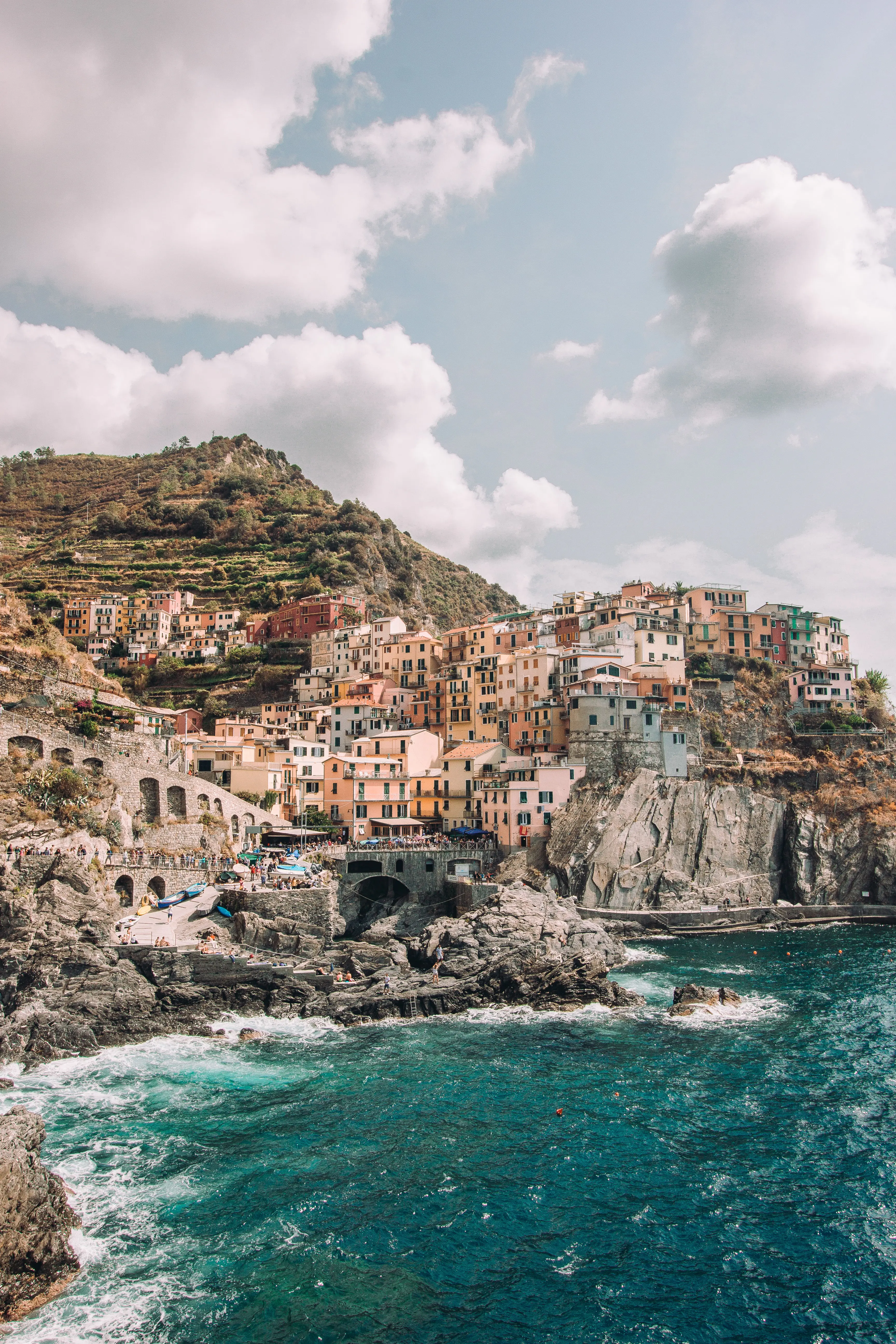
Day 8 – 10: Venice
Where to stay? Pick a hotel in the center, for example, San Marco or San Polo. It is tough to get around in Venice, so a well-located hotel is essential.
Day 8: Transfer to Venice
Train transfer. Direct trains from Florence to Venice take about 2h15mn.
Gondola. You have to make one or several gondola tours in Venice. It is the best way to explore this amazing city. See prices and reviews here.
Day 9: Venice
Doge’s Palace. Palazzo Ducale was the home of the leader of the former glorious Republic of Venice. Thanks to its commercial navy, it was one of the greatest European economic powers during the Middle Ages. It is the best place to visit in Venice. There is often a queue to enter; the skip-the-line ticket is useful. Read our post on visiting Doge’s Palace.
Basilica di Santa Maria della Salute. The crown jewel of Venice. An amazing church on the outside and the inside. Admission is free. You can get there by water bus, at the “Salute” station.
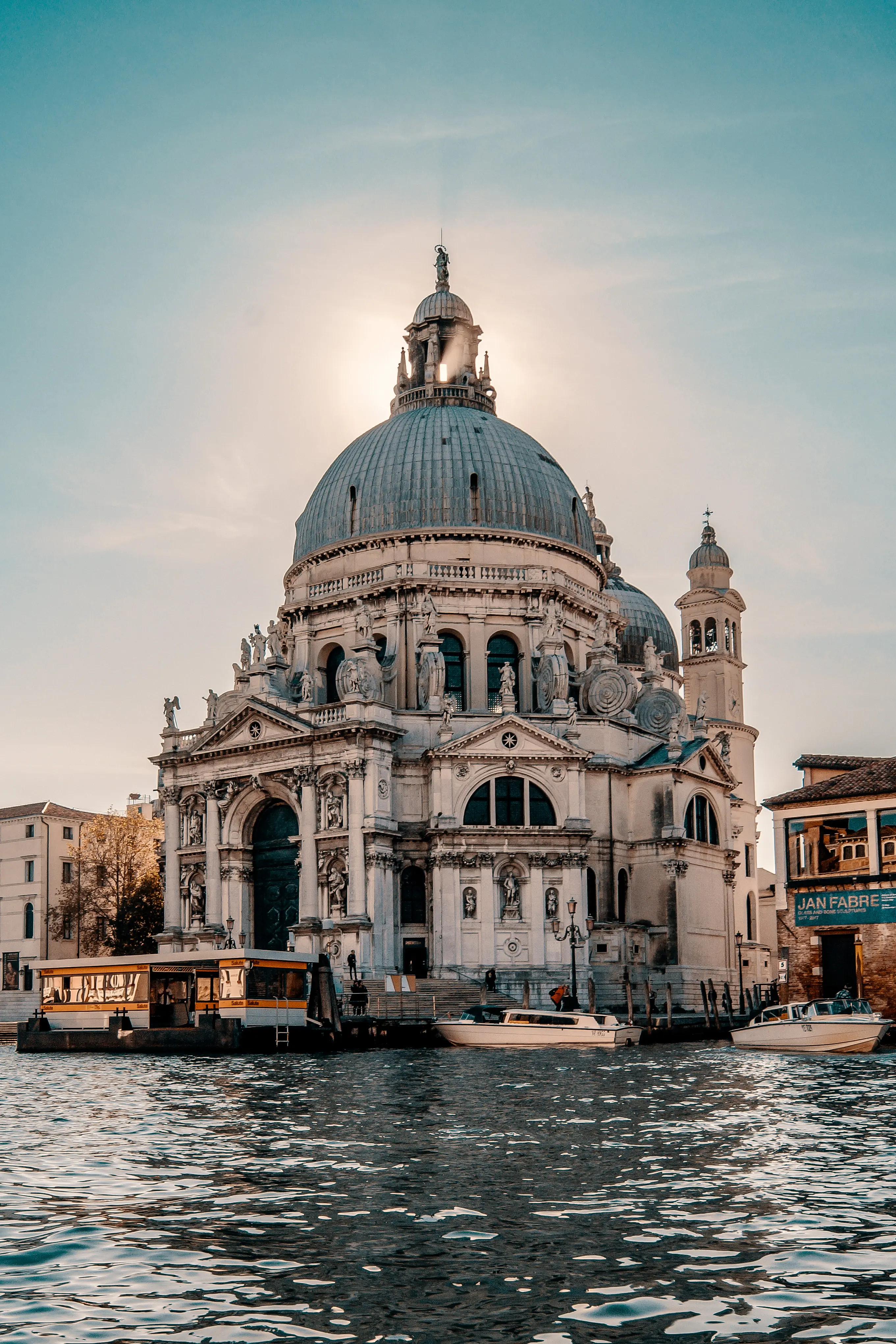
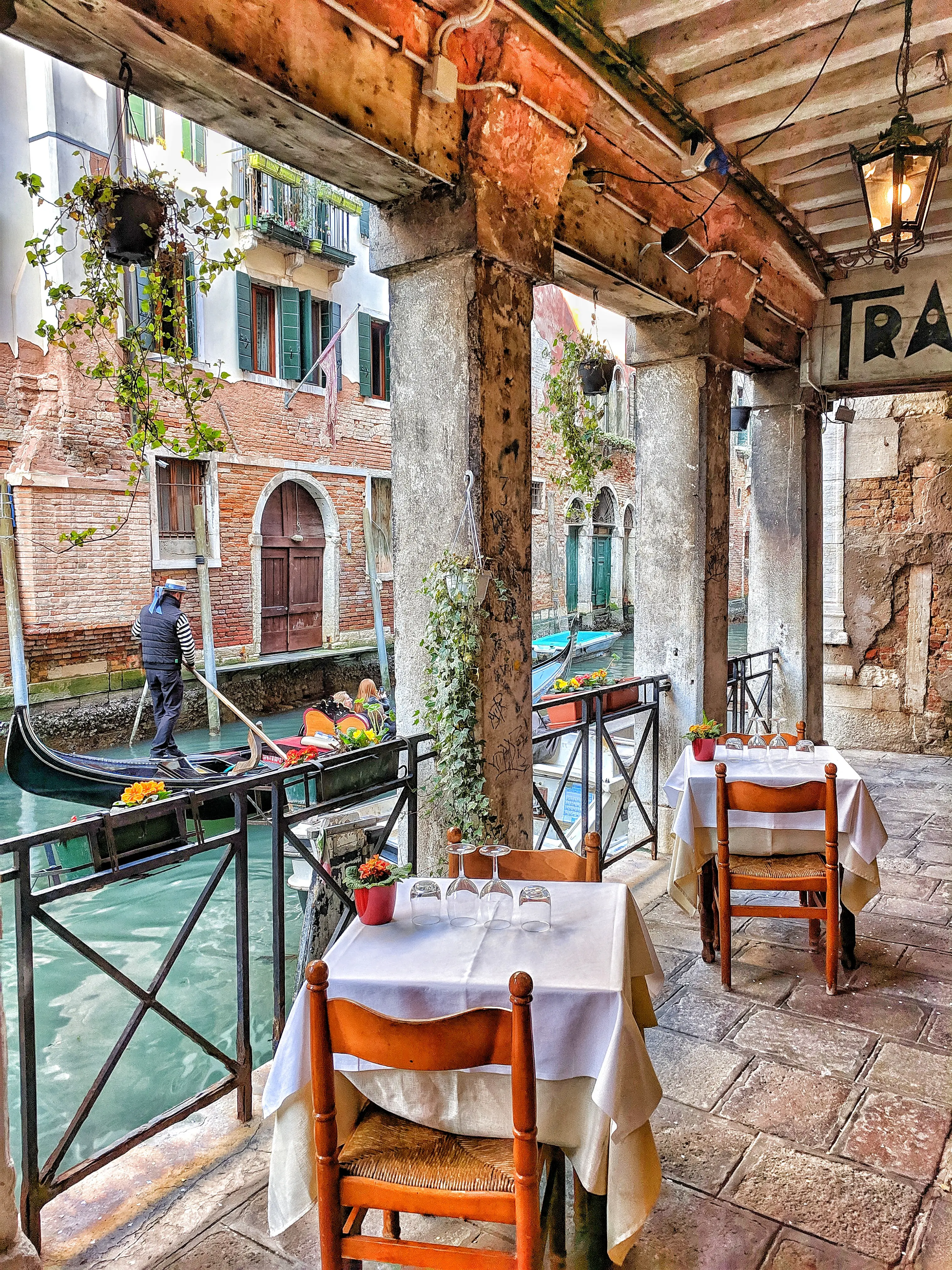
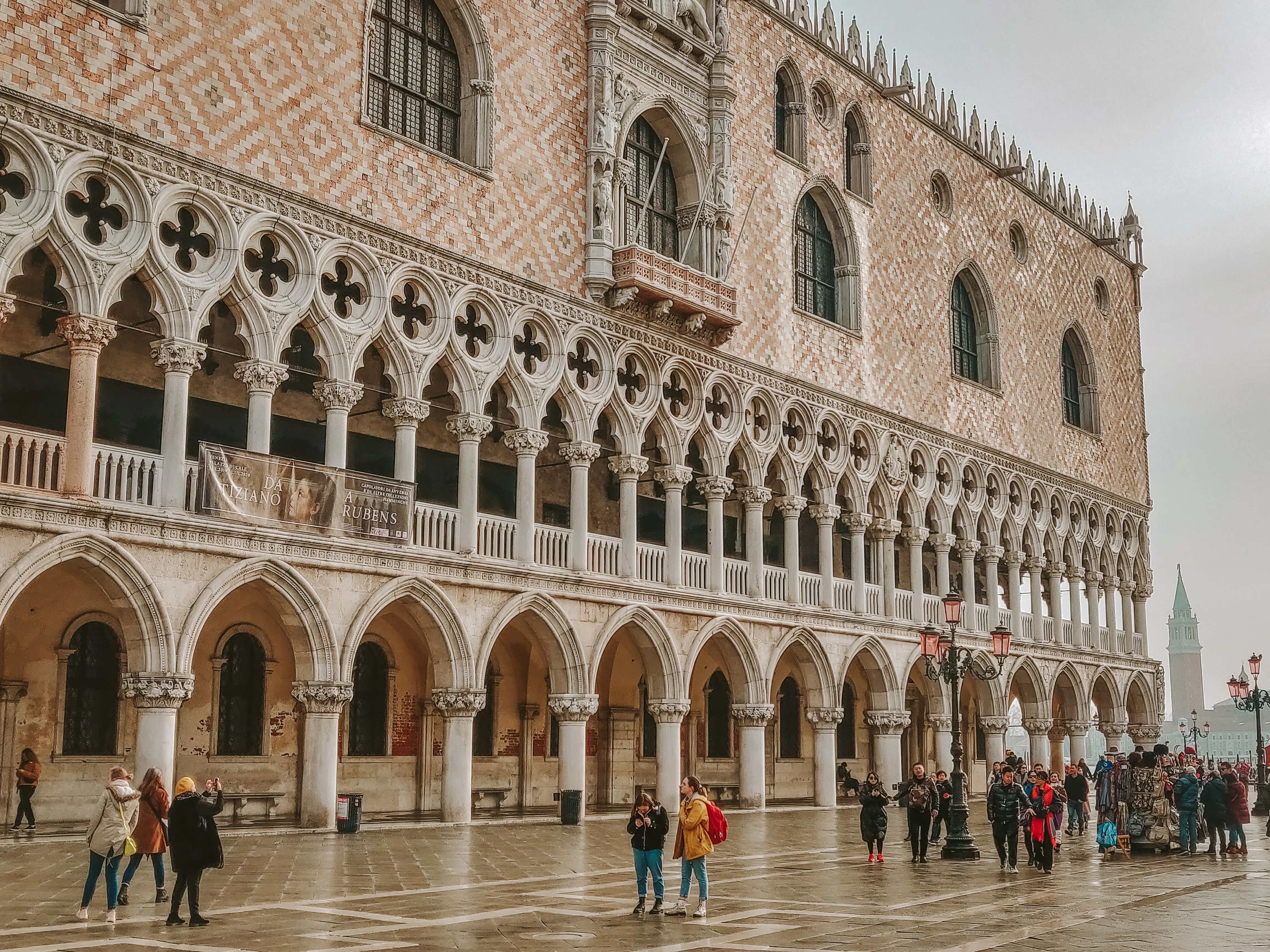
Day 10: Departure
Airport transfer. The best way to end your 10 days in Italy itinerary is by taking the boat shuttle to Marco Polo Airport (see prices and availability). It is not the fastest, but it’s unique. See other ways on the airport transfer from Venice’s Marco Polo Airport.
Back to FCO? If you have a round-trip to Rome, you must return to Rome’s airport. You can book a flight from Venice to Rome. It is fast (1h10mn), and cheap (≈ 100$). You can also take a train, but it is less convenient. Only one train is direct to the airport, while the others leave you in downtown Rome and you must take another train. It is much slower by train (≈5h).
Alternatives 10-day itinerary
For Roman times lovers. You will find plenty of places to discover in Rome and Naples. Thus, you can stay longer in one of these cities and shorten Florence. Florence will appeal more to lovers of the Art and Renaissance periods. It’s still a great city to discover, but you could stay only one or two nights in Florence.
For Art lovers. If you plan an itinerary of 10 days in Italy to see as much Art as possible, especially Italian Renaissance Art, you can stay longer in Rome or Florence. Naples is less attractive for Art. If you don’t want to visit Pompei and climb Vesuvius, you can even skip Naples. You can then stay for 4 days in Rome and 4 days in Florence and make the most of the Italian Renaissance.
Beaches. Some of the best beaches in Italy are on the Amalfi Coast. You can twist this 10-day itinerary in Italy to stay longer in Naples and the Amalfi Coast to enjoy the beaches and the sea more.
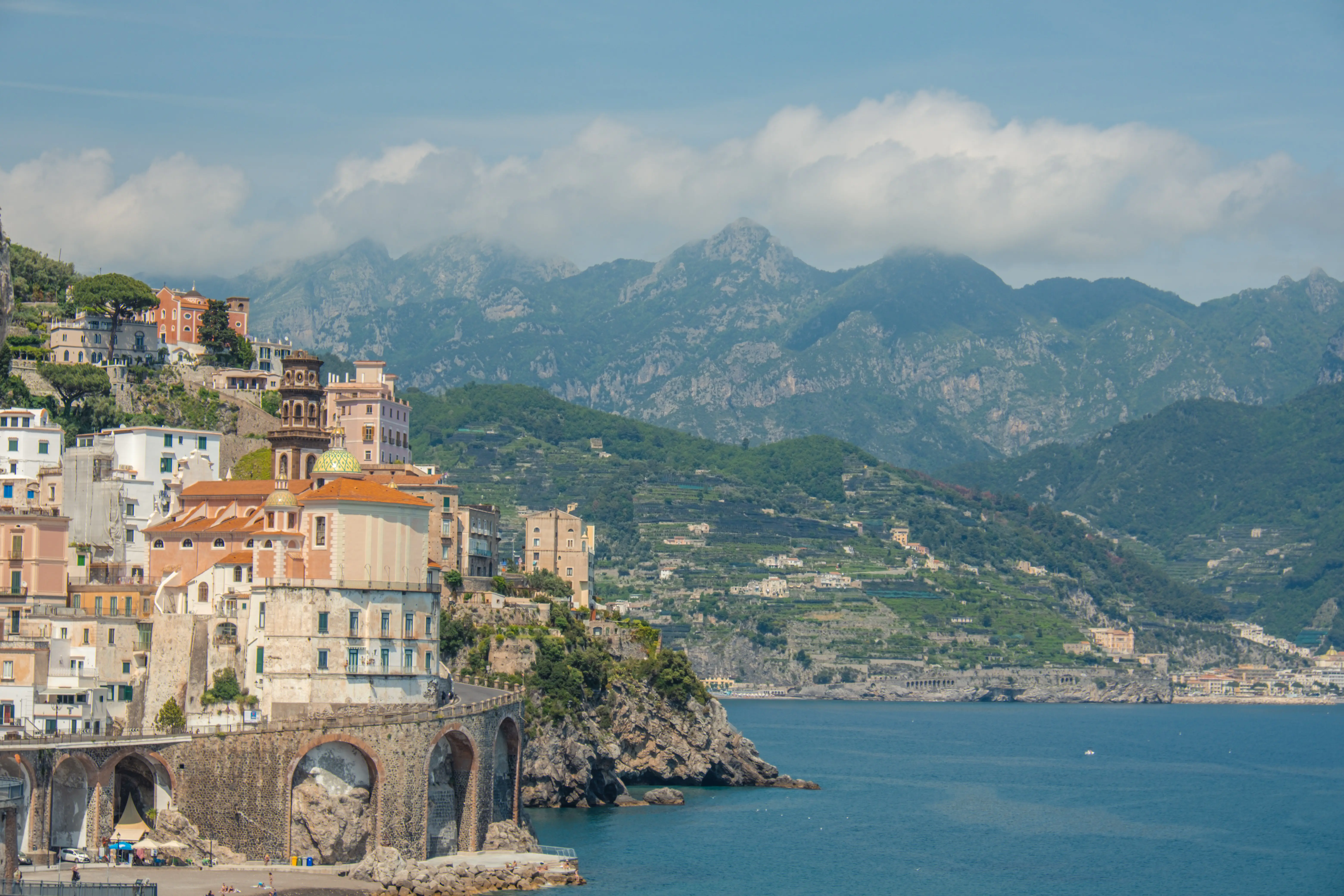
Preparing your 10 days in Italy itinerary
Do I need a visa to stay 10 days in Italy?
UE & Schengen area. Citizens from the EU and the Schengen area can travel visa-free to Italy.
Visa Exemption. US Citizens can travel visa-free in Italy. You can arrive in Italy and travel without applying for a visa beforehand. That’s also the case for over 60 countries, for instance, Canada, the United Kingdom, Japan, and Brazil.
Travel Authorization. If you travel with a visa exemption, you must obtain an Electronic Travel Authorization (ETIAS). It works like the American ESTA or the Korean KETA. It will be mandatory in 2024. Travel authorization is not required if you have a visa.
Visa. Citizens who cannot benefit from the visa exemption must apply for a visa before traveling. The visa is European and valid for the whole Schengen area for up to 90 days.
See here our comprehensive guide about Italy entry requirements.
Payments in Italy
Credit Card. Italy’s only currency is the Euro. Credit cards are broadly accepted, especially Visa and Mastercard. AMEX is often limited to big stores or hotels. Don’t expect the tiny Italian restaurant to accept AMEX.
Minimum amount. Some small shops can have a minimum amount to accept credit cards, for example, 10€. They will only accept cash for smaller amounts.
Cash. You can get cash in any ATM. They are often free of charge, meaning you will not have to pay the Italian bank to withdraw. Nonetheless, your bank provider can charge you, for example, for withdrawing in another country or another currency.
Plug outlets
Italy uses electricity sockets type F or L. The voltage is 230V.
Europe. Not grounded Type C plugs are compatible with sockets in Italy. Grounded Europlugs Type E/F are compatible with the F Socket. You will need an adapter if your accommodation has only an L socket.
US, Canada, Mexico. US plug type A or B (grounded) are NOT compatible with the sockets in Italy. You need an adapter (see prices here). Moreover, the voltage is 230V, while 120V in the US. It means you must check that your device is compatible with this voltage. Nowadays, most devices are built to be compatible with the US (120V) and the rest of the world (220V – 240V) voltage. See here an adapter with a voltage converter.
UK, Singapore, UAE, Qatar, Saudi Arabia. The Type G plugs are not compatible with electricity sockets in Italy. You will need an adapter.
Pro tip. Buy one adapter, and pack a power strip to power all your devices simultaneously.
How do you get Internet connectivity in Italy?
It is always helpful to have Internet connectivity while traveling. For instance, locate yourself with Google Maps, order an Uber, and read information about a place. Here are the best ways to get Internet connectivity in Italy.
Roaming. Roaming is the easiest way to get Internet connectivity in Italy. It is also costly. Prices depend on your provider. For instance, AT&T has an International Pass for 10$ a day. So it will cost you 140$ to get Internet connectivity with roaming.
Free WiFi. There is Free WiFi in many cafés and restaurants. Unfortunately, it is not reliable. You must ask for the WiFi password (Posso avere la password del WiFi, per favore?). It is usually a hassle, so we don’t recommend it.
Pocket WiFi Box. Pocket WiFi boxes are small battery-powered devices you keep with you every day. It is a 4G modem that shares its Internet on private WiFi. You can then connect all your devices to this private WiFi. You can rent a Pocket WiFi Box in many places or deliver it to your hotel when you arrive. The rent covers Internet usage, so you won’t have an unexpected fee later. The drawback is that you must recharge this device daily and hope it stays on the entire day. In Italy, prices are about 50$ for 3 days or 130$ for 10 days. Not worth it. See prices here.
Local SIM. You can buy a SIM when you arrive. It is usually cheap. The drawback is that you must find a seller when you arrive. Store your SIM in a safe location to avoid losing it. Since you have a new number, it also messes up your iMessage/FaceTime configuration. Lastly, you must change the SIM to connect somewhere you receive a 2FA code on your phone. It’s not convenient at all.
Local eSIM. eSIMs are virtual SIM cards. To install an eSIM on your phone, you only need to download it. Your smartphone must be compatible. It has worked on the iPhone since the Xs/XR was released in September 2018. Since it is a virtual SIM, you don’t need to remove yours. An eSIM is dirt-cheap and very easy to use. Since it is installed on your phone, it works flawlessly. An eSIM for 14 days in Italy with 2Go of data costs 8$. It is the cheapest option to get Internet Connectivity in Italy. We recommend buying an eSIM on the Airalo app, which we use. See prices here.
Where to buy your plane tickets for a 10-day itinerary in Italy?
Finding the ticket. The best plane ticket comparator in our eyes is Google Flights. There are few international, non-European routes to Italy. You will probably stop in the UK, France, Germany, or Dubai.
Book on the company site. Always book your plane ticket directly on the company site. When using travel agencies to buy your tickets, you can get fewer services, for example, no choice of seating. When problems happen, it is always a hassle with intermediaries, whereas the company usually has good customer service.
Etiquette in Italy
Speak local. It is always welcome when a visitor tries to speak the local language. If you can greet and thank in Italian, you can have a much better experience. The words to know in Italy are:
- Buongiorno: literally “good day”, to be used from the morning till the evening
- Buona sera, literally “good evening”, to be used in the evening
- Grazie: Thank you
Tip. Service is always included in Italy, so tipping is not mandatory. Tipping is a clear sign you enjoyed the service.
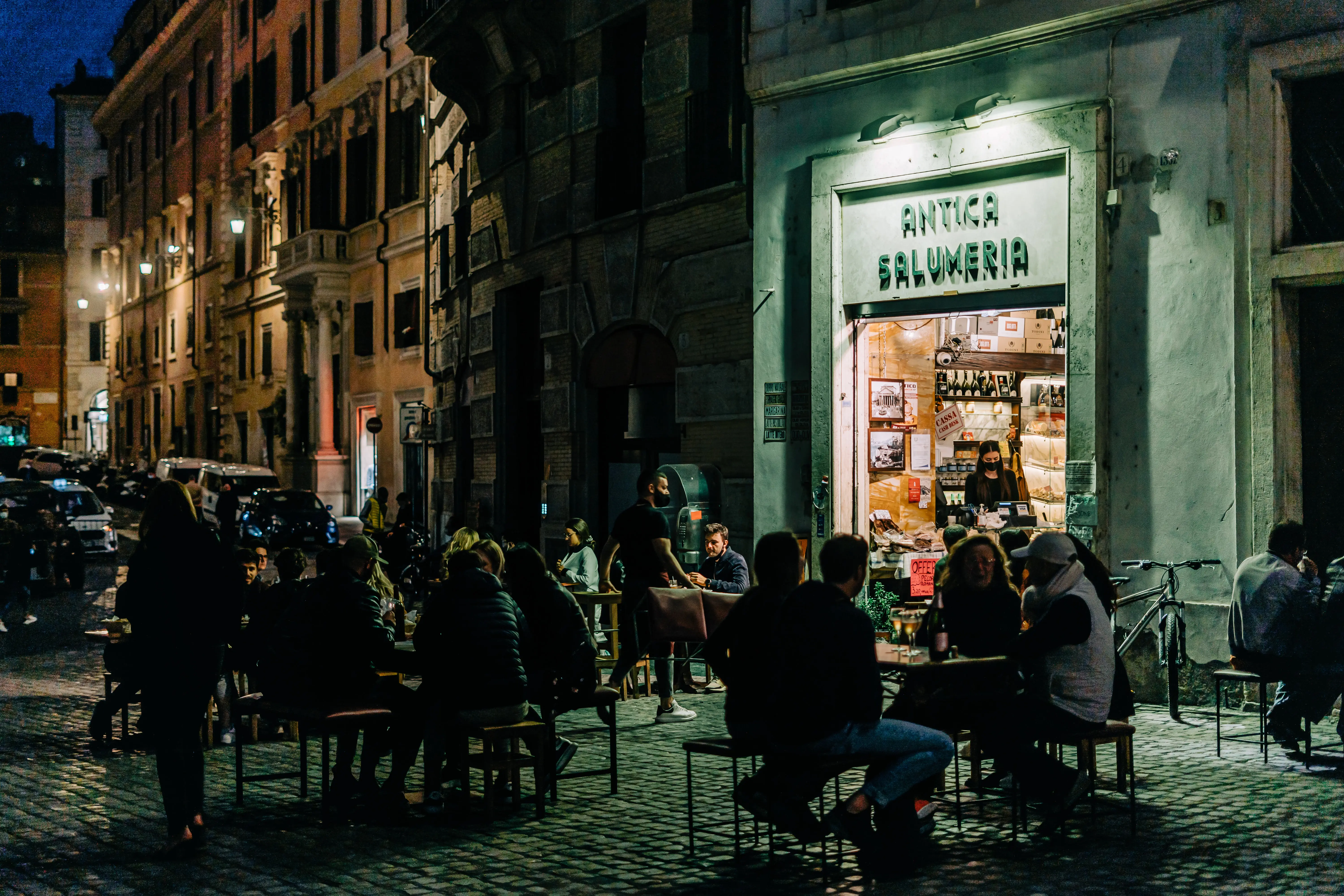
The best time for a 10-day itinerary in Italy, from Amalfi Coast to Venice
Peak season. Most people visit Italy in July and August. These months can be sweltering. You can expect multiple days over 40°C (> 100°F) from June to August. AC is not everywhere in Italy, so you cannot go to the local cafe to cool down. For these reasons, we do not recommend July and August.
Winter. Winter in Italy is not great. The weather is cloudy, rainy, and not so cold, but enough to need a sweater and a trench. Snow in Rome, Milan, or Venice is scarce. Few people visit Italy, so you can have a great experience and little-to-no queue if you don’t mind the weather.
Holy Week. Vatican City, enclosed in Rome, is one of the most significant places for Catholics. The Pope lives here. During catholic events, especially the main one, aka the Holy Week and Easter, many pilgrims go to Rome to pray together. Visiting Rome and especially the Vatican during this week is much more complex.
In Between. The best time for an itinerary of 10 days in Italy is between these periods. September, October, April, and May. There is a little less crowd than during the summer, and the weather, with many sunny days and great temperatures, is perfect.
This 10-day itinerary allows you to discover many sides of Italy: the Roman period, the Italian Renaissance, the Middle Ages in Venice, and the gorgeous Amalfi Coast. We hope you will have a wonderful stay!
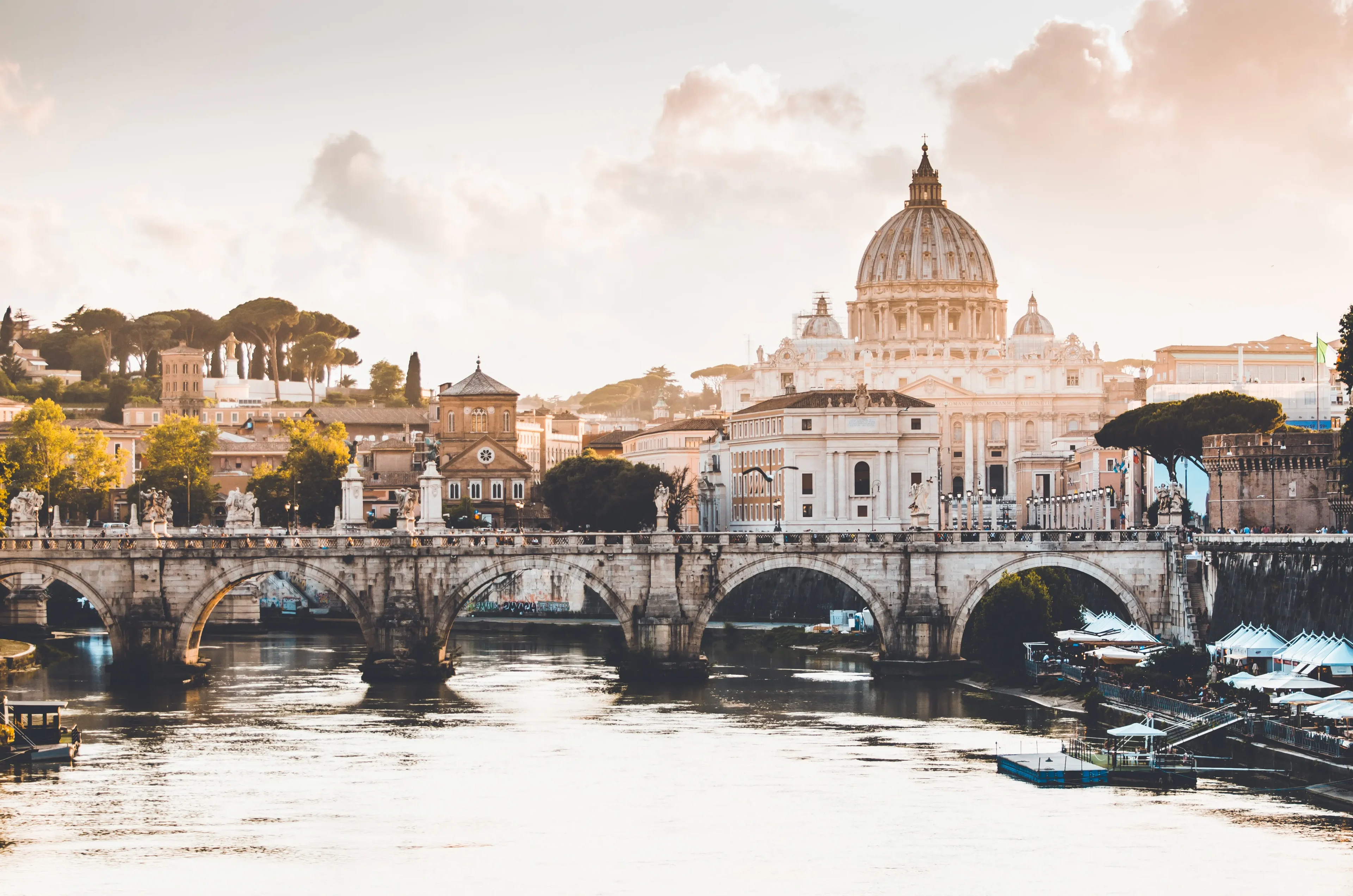
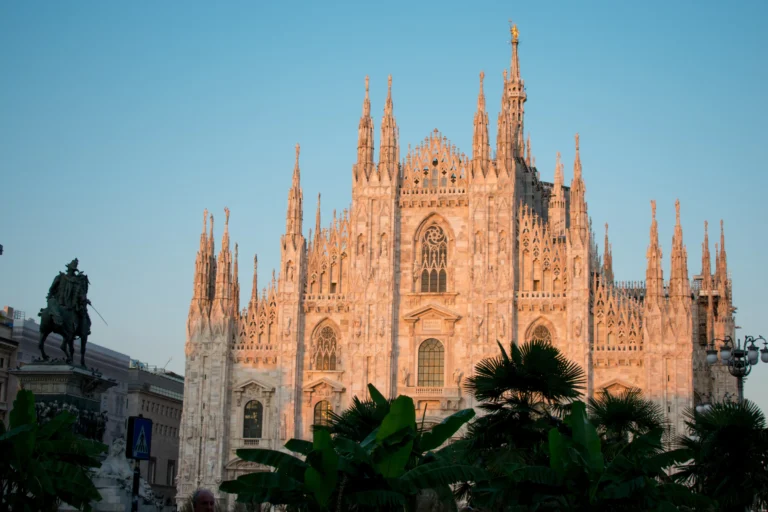
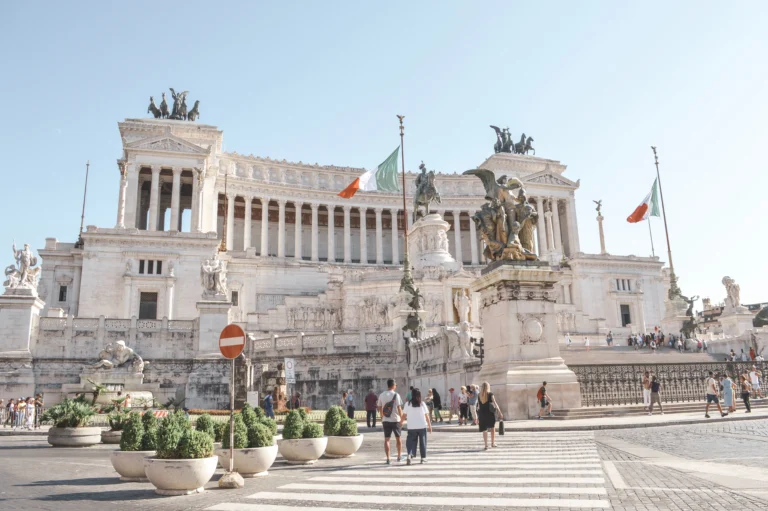
Leave a Comment